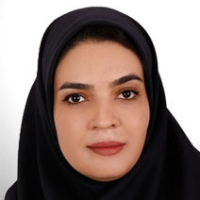The Analysis of Key Factors Influencing the Expansion of Rural Migration with Eemphasis on the Issue of Informal Settlement (Case Study: Shirabad Neighborhood in Zahedan)
Informal settlement is largely rooted in migration, particularly influenced by parameters such as poverty, lack of expertise and specialization, type of occupation, cultural conflict, illiteracy, ethnic and cultural identity. Most of the residents of these areas are forced to live in ghettos and slums due to factors such as lack of access to jobs in the city coupled with poverty and lack of specialization. Heterogeneous and dispersed constructions without observance of technical principles and urban planning with narrow, meandering alleys, running sewage in the alleys and unsavory sanitary condition are among the adverse consequences of informal settlement. Therefore, the main purpose of this study is to investigate the key factors affecting rural migration with emphasis on the issue of informal settlement in Shirabad neighborhood of Zahedan.
The research method is descriptive-analytical and data collection was conducted by a survey. In the first step of the research, a list of primary factors involved in the spread of migration to informal settlements was identified as research variables using existing documents and previous researches. The variables were analyzed based on two local communities (all heads of households in Shirabad neighborhood) and expert questionnaires. Descriptive statistics and exploratory factor analysis in SPSS software as well as cross-impact analysis model in MicMac software were used for the analysis of data.
The results suggested that four key factors of drought and lack of water resources, reduced productivity and devaluation of the agricultural sector, inappropriate infrastructure in rural areas and wage gap between rural and urban areas play a key role in shaping rural migration and intensifying informal settlement.
-
Comparative Comparison of New and Old Neighborhoods of Isfahan City Based on the Iranian-Islamic City Approach (Case Study: Shahshahan and Baharestan Neighborhoods)
Masoud Safaeepour *, Fahime Fadaei Jezi
Geography and Territorial Spatial Arrangement, -
Measuring Social Justice in the Spatial Structure of Bandar Dair (Dair Port) with an Emphasis on Service Uses
Saeid Amanpour *,
spatial planing, -
Analysis of the role of science and technology park in the economic development of the region (Case study: Pardis Park, Tehran)
*, Ramin Amininejad, Said Ghasemizadeh
Journal of Urban Economics,



